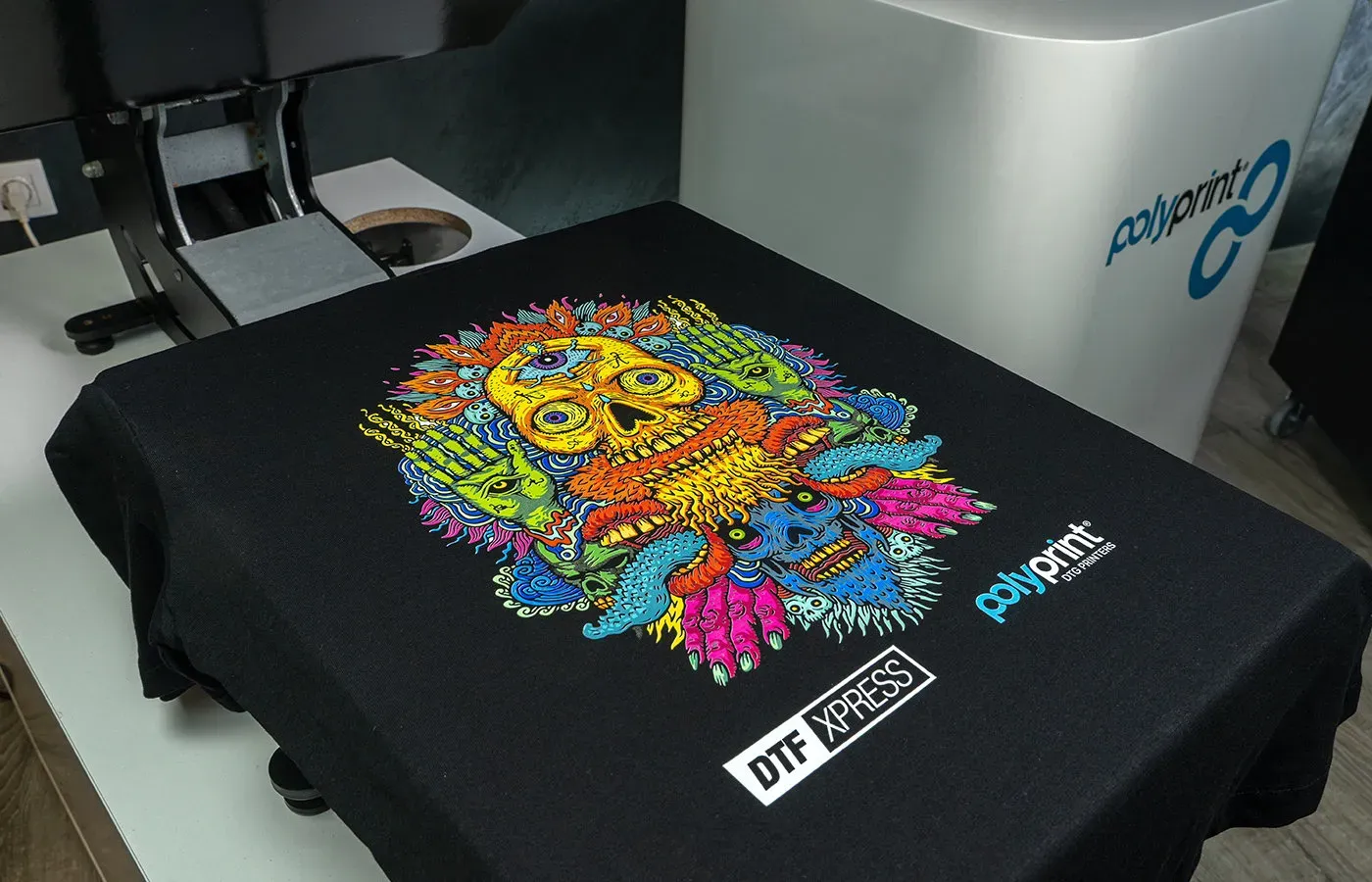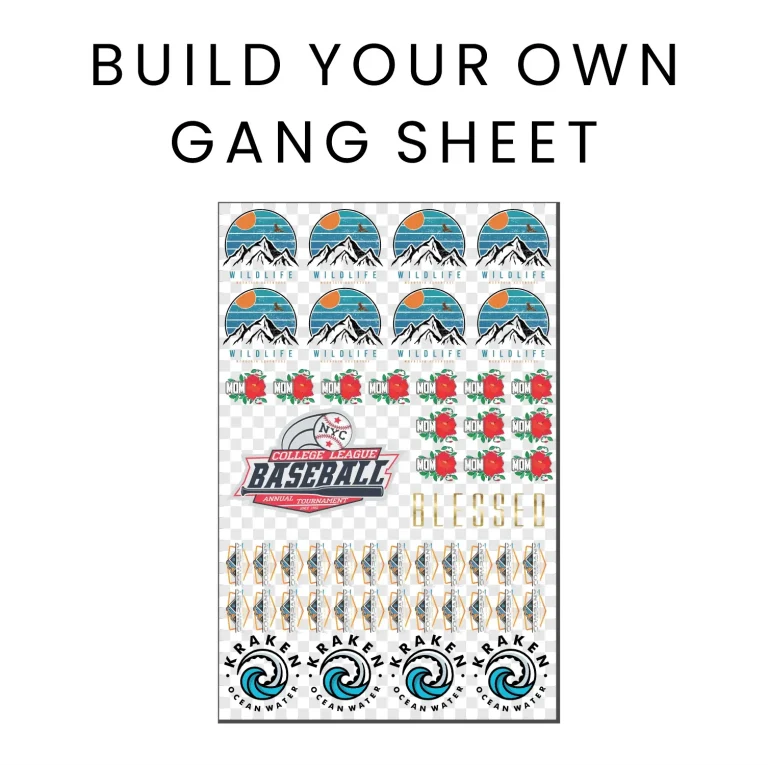DTF printing, or Direct to Film printing, is transforming the apparel customization landscape by providing a vibrant and versatile method for transferring designs onto fabrics. By utilizing specialized DTF printing tools, including high-quality transfer films, users can achieve stunning results that stand out in today’s competitive market. To optimize your DTF printing setup, it’s essential to choose the best DTF printers that cater to your production needs, along with reliable DTF printing materials to ensure consistency and durability. A heat press for DTF is equally important, as it allows for even heat distribution, ensuring successful adhesion of prints to garments. In this blog post, we will delve deeper into the tools and techniques necessary to unlock the full potential of DTF printing, enhancing your creative projects and boosting your business.
Direct to Film printing, often abbreviated as DTF, is quickly becoming a game-changer in the world of textile and apparel printing. This innovative technique leverages advanced technology to create vibrant and durable designs, making it a favorite among entrepreneurs and crafters alike. With the right resources, including quality ink and effective transfer films for DTF, users can produce exceptional prints that meet diverse market demands. Furthermore, understanding the role of a reliable heat press for DTF applications will enhance the efficiency and quality of transfer processes. As we explore the essentials of this exciting printing method, alternative terms and techniques will be highlighted, leading to a comprehensive overview of what it takes to thrive in DTF printing.
Understanding DTF Printing: A Game-Changer in the Printing Industry
Direct to Film (DTF) printing has emerged as a revolutionary method in the apparel customization sector, marking a significant departure from traditional printing techniques. Unlike methods such as screen printing, which often struggles with intricate designs and color variations, DTF printing delivers stunning vibrancy and detail in every design. This technique allows for printing directly onto a special film, enabling users to work with complex images and vivid color palettes. As companies seek innovative solutions to meet consumer demands for unique and personalized apparel, DTF printing stands out as a frontrunner for efficiency and quality.
The workflow of DTF printing is relatively straightforward, yet it offers vast creative potential. Artists can create detailed artworks, which are then printed directly onto film using specially formulated DTF inks. After printing, the films are coated with a powdered adhesive that bonds the design to a range of fabrics during the heat transfer process. This ability to print directly onto films, followed by heat transferring onto diverse textile surfaces—from cotton to synthetic blends—makes DTF printing a flexible solution that meets various market needs.
Essential DTF Printing Tools: What You Need to Get Started
When embarking on your DTF printing journey, having the right tools is critical to ensuring high-quality output and operational efficiency. A reliable DTF printer is foundational; it must be capable of printing on specialized films with precision. Top models from renowned manufacturers like Epson and Roland are commonly preferred among professionals for their durability and output excellence. Equally important is investing in quality transfer films; these films are meticulously designed to work with DTF inks, ensuring that the final prints exhibit sharpness and longevity.
Additionally, incorporating a high-quality heat press into your setup cannot be overstated. This tool is essential for applying the right temperature and pressure during the transfer process, which directly influences the adherence of the design to the fabric. When selecting a heat press, look for adjustable settings tailored to different materials, helping to avoid damage and optimize the transfer process. Together, these tools form the backbone of a successful DTF printing operation, enabling you to produce stunning and durable prints consistently.
The Importance of Quality Transfer Films in DTF Printing
Transfer films are perhaps one of the most critical components in the DTF printing process. The quality of the transfer film directly affects the adhesion of the DTF inks and the final appearance of the printed images. High-quality films are designed to maintain the vibrancy of colors and offer strong adhesion to a variety of fabric types. When selecting transfer films, ensure they are compatible with your chosen DTF printer and inks to avoid common issues such as peeling or fading prints.
Moreover, the market offers a range of transfer films, from matte to glossy finishes, allowing you to achieve different aesthetic results depending on your design needs. Experimenting with various films can enhance your creative projects while ensuring your prints are durable and resistant to wear and tear. As DTF printing technology advances, suppliers continue to innovate and improve transfer films, further supporting users in achieving high-quality results.
Selecting the Best DTF Printer for Your Business Needs
Choosing the right DTF printer is a pivotal decision that can impact your business’s success. Factors such as print resolution, speed, and compatibility with various transfer films should guide your selection process. A printer that excels in high-resolution outputs is crucial for capturing intricate designs and maintaining color fidelity. Popular choices, such as Epson’s SureColor series, are well-regarded in the industry for their excellent print quality and reliability.
It’s also beneficial to consider the scalability of your printing equipment. If your business anticipates growth, investing in a printer that can handle higher volumes without quality loss is wise. Additionally, consider the support and resources offered by the manufacturer; reliable customer service and access to online communities can provide valuable assistance, particularly for those new to DTF printing. Ultimately, selecting a printer that meets both your current needs and potential future demands will set a solid foundation for your DTF printing endeavors.
Maximizing Color Vibrancy with Quality DTF Inks
The inks used in DTF printing play a crucial role in determining the final quality of your prints. High-quality DTF inks not only ensure vibrant colors but also feature enhanced adhesion properties that help maintain longevity against washes and sunlight. Many professional printers opt for water-based inks, which are less toxic and provide a safer working environment compared to solvent-based alternatives. The right choice of ink can significantly impact the overall appearance and durability of printed designs.
When selecting DTF inks, it’s essential to consider brands that have been tested and proven to yield excellent results across various fabric types. Some inks are specially formulated for enhanced flexibility, which accommodates fabrics that undergo stretching or movement during wear. By investing in high-quality inks and testing them with your chosen materials, you can achieve outstanding prints that meet your customers’ expectations and maintain the integrity of your designs over time.
Best Practices for Successful DTF Printing
To truly maximize your DTF printing potential, implementing best practices is vital. Start with thorough pre-print preparation: clean the transfer film surface to ensure no dust or particles interfere with ink adhesion. A clean work environment leads to better print outcomes and minimizes defects, allowing you to craft high-quality products consistently. Furthermore, regular maintenance of your DTF printer—like cleaning the print heads—ensures smooth operation and uninterrupted workflow.
Another best practice includes conducting test transfers before full production runs. This step allows you to calibrate print settings and confirm the compatibility of your materials, thereby mitigating potential inconsistencies. Taking these measured steps not only enhances the quality of your final products but also helps streamline your workflow, ultimately saving time and materials in the long run. By focusing on preparation and maintenance, you’ll ensure that your DTF printing projects yield the best possible results.
Frequently Asked Questions
What is DTF printing and how does it work?
DTF printing, or Direct to Film printing, is a method that allows for vibrant designs to be printed directly onto a special film before being transferred to fabric. This process involves using compatible DTF printing tools like a quality DTF printer, transfer films, and heat presses, ensuring vibrant colors and durability.
What are the essential tools required for effective DTF printing?
To achieve the best results in DTF printing, you need several essential tools: a reliable DTF printer, high-quality transfer films, specialized inks, powder adhesives, and a heat press for DTF applications. Each of these components plays a crucial role in the successful transfer of prints onto various fabrics.
What type of transfer films are best for DTF printing?
For effective DTF printing, it’s crucial to use transfer films that are compatible with your specific DTF printer. High-quality transfer films should facilitate proper ink adhesion and produce vibrant, durable prints. Ensure the films are designed specifically for DTF processes to avoid issues during heat transfer.
How do I choose the best DTF printer for my needs?
Selecting the best DTF printer requires considering factors such as print volume, quality, and budget. Popular brands like Epson and Roland offer DTF printers known for reliable performance. Assess your specific printing requirements and seek printers that can handle the formats and materials you intend to work with.
What role do adhesives play in DTF printing?
In DTF printing, powder adhesives are crucial as they bond the printed design to the fabric when heated. Proper application of these adhesives is essential for enhancing durability and wash resistance of the final product. Using the right type of adhesive according to the manufacturer’s guidelines will optimize your DTF printing results.
What features should a heat press for DTF printing have?
A good heat press for DTF printing should allow for adjustable temperature and pressure settings to match the requirements of different transfer films and fabrics. Consistent application of heat and pressure is critical to ensure successful transfers, so look for a heat press that offers precision and ease of use.
| Key Component | Description | Importance |
|---|---|---|
| DTF Printers | Printers specifically designed for DTF printing that handle unique requirements. | Essential for achieving high-quality prints. |
| Transfer Films | Specialized films that allow for proper ink adhesion during printing. | Crucial for maintaining vibrancy and clarity. |
| Inks | High-quality, user-friendly water-based inks for vibrant colors. | Directly affects print appearance and durability. |
| Adhesives | Powder adhesives bond printed designs to fabrics during heat transfer. | Influences durability and wash resistance of prints. |
| Heat Press | Applies consistent temperature and pressure for transfers. | Critical for successful film-to-fabric transfers. |
Summary
DTF printing is a cutting-edge process that allows for versatile customization across various fabrics. To truly maximize your DTF printing potential, it’s essential to understand the importance of using quality tools and materials like specialized DTF printers, transfer films, inks, and adhesives. Each component plays a pivotal role in ensuring vibrant results that are both durable and appealing to customers. As you incorporate best practices and stay abreast of the latest innovations in DTF printing technology, you’ll enhance your production efficiency and creative capabilities, leading to superior printed products that stand out in a competitive market.






